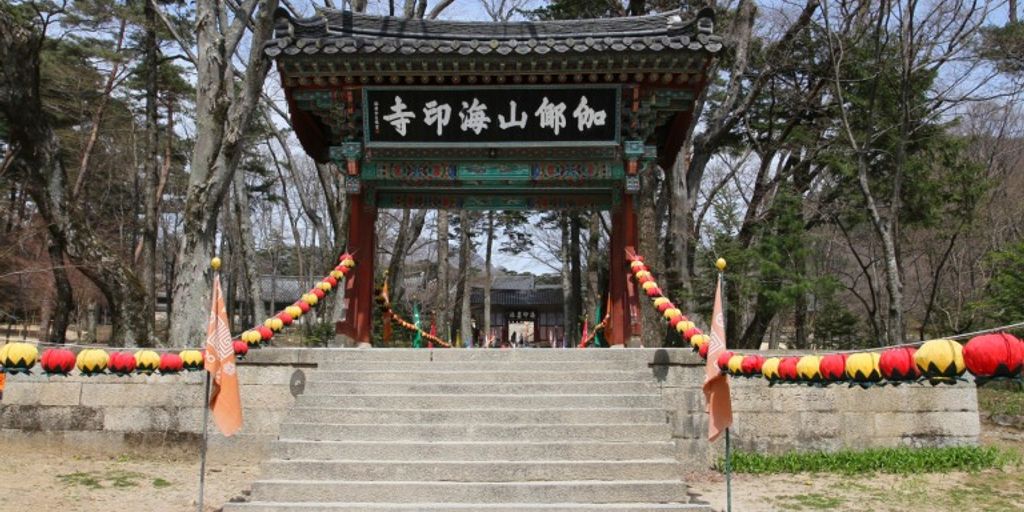Planning to visit Korea? These travel essentials will help you plan your trip, get the best deals, and save you time and money before and during your Korean adventure. From understanding visa requirements to packing the right items and navigating local customs, this guide is designed to ensure you have a smooth and enjoyable journey.
Key Takeaways
- Most travelers can enter Korea with a Korean Electronic Travel Authorization (K-ETA), with 22 countries being exempt from visa requirements.
- Pack according to the season and weather conditions, including essential toiletries and a first aid kit.
- Familiarize yourself with local transportation options and travel apps to navigate South Korea efficiently.
- Consider booking accommodations in advance, including unique stays in traditional Hanoks.
- Understand local dining etiquette and try must-eat Korean dishes, with options available for vegetarians.
Visa and Entry Requirements

Understanding K-ETA
The Korea Electronic Travel Authorization (K-ETA) is a new system that allows travelers from eligible countries to enter South Korea without a visa. You must apply for K-ETA online before your trip. The application process is straightforward and usually takes a few minutes to complete. Once approved, your K-ETA is valid for multiple entries over two years.
Countries Exempt from Visa
Citizens of certain countries may be eligible for visa-free entry or visa-on-arrival for a limited duration. Here are some key points to note:
- Valid Passport: Ensure that your passport has at least six months of remaining validity from the date of entry.
- Visa-Free Entry: Some countries are allowed visa-free entry for short stays.
- Visa-on-Arrival: Available for citizens of specific countries under certain conditions.
Necessary Travel Documents
When entering South Korea, here are the preparations you need to make:
- Valid Passport: Your passport must remain valid throughout your stay in Korea.
- K-ETA or Visa: Depending on your nationality, you may need to apply for K-ETA or obtain a visa.
- Arrival Form: Fill out the arrival form provided during your flight or at the airport.
Make sure to check for updates from the Korea Disease Control Agency (KDCA) as immigration safety measures are subject to frequent changes.
Packing Essentials for Korea

Packing for a trip to South Korea requires some planning to ensure you have everything you need for a comfortable and enjoyable journey. Here are some essentials to consider:
Clothing for Different Seasons
South Korea experiences four distinct seasons, so it’s important to pack accordingly. For summer, bring lightweight and breathable clothes like shorts, t-shirts, and dresses. In spring and autumn, pack layers such as light jackets or sweaters. Winter requires warm clothing like heavy coats, scarves, gloves, and thermal layers. Check the forecast before you go to ensure you’re prepared for the weather.
Toiletries and Personal Care
Don’t forget to pack your essential toiletries. Here’s a list to help you remember:
- Shampoo and conditioner (2 in 1)
- Facewash
- Moisturizer
- Toothbrush and toothpaste
- Razors
- Deodorant
- Sunscreen
- Make-up
- Hairbrush and hair accessories
First Aid Kit
It’s always a good idea to carry a basic first aid kit when traveling. Include items like:
- Band-aids
- Antiseptic wipes
- Pain relievers
- Prescription medications
- Allergy medicine
- Tweezers
Having a well-prepared first aid kit can make a big difference in case of minor injuries or illnesses during your trip.
Navigating South Korea

Transportation Options
South Korea offers a variety of transportation options to help you get around. You can use buses, trains, and taxis to travel between cities and within them. The subway system in major cities like Seoul and Busan is very efficient and easy to use. For longer distances, the KTX high-speed train is a great choice. If you prefer driving, renting a car is also an option, but be aware of local driving rules.
Using Travel Apps
To make your journey smoother, consider downloading some helpful travel apps. Naver Map and KakaoMap are popular for navigation, providing detailed maps and real-time traffic updates. For finding restaurants and cafes, MangoPlate is a good choice. If you need a taxi, Kakao T works like Uber. These apps can make your travel experience much easier and more enjoyable.
Local Etiquette and Customs
When visiting South Korea, it’s important to be aware of local etiquette and customs. Always be polite and respectful. For example, when you meet someone, a slight bow is a common greeting. In public places, try to keep noise levels down and avoid speaking loudly. Also, remember to take off your shoes when entering someone’s home or certain traditional accommodations like a kimchee guesthouse. Following these customs will help you have a more pleasant and respectful experience in South Korea.
Accommodation Tips

Types of Accommodation
When traveling to South Korea, you’ll find a variety of accommodation options to suit your needs. From luxurious hotels to budget-friendly hostels, there’s something for everyone. Traditional Hanoks offer a unique cultural experience, while modern hotels provide all the amenities you might need.
Booking in Advance
It’s always a good idea to book your accommodation in advance, especially during peak travel seasons. This ensures you get the best rates and availability. Websites like Trip.com can help you find and book the perfect place to stay.
Staying in Traditional Hanoks
For a truly unique experience, consider staying in a traditional Hanok. These traditional Korean houses offer a glimpse into the country’s rich history and culture. They are often located in scenic areas and provide a peaceful retreat from the hustle and bustle of city life.
Staying in a Hanok can be a memorable part of your trip, offering a blend of comfort and cultural immersion.
Food and Dining

Korean cuisine is rich and diverse, offering a variety of flavors and textures. Some must-try dishes include bibimbap, a mixed rice dish with vegetables and meat, and kimchi, a fermented vegetable side dish. Don’t miss out on Korean barbecue, where you can grill your own meat at the table.
Dining in South Korea is a communal affair, so you might have to rustle up a group to enjoy its famed barbecue restaurants. Eating is a communal activity in Korea, and many restaurants, especially barbecue joints, don’t offer single servings. If you’re traveling solo, you might either have to drag someone from your hostel along with you or loosen your belt and order pork belly for two.
If you have food allergies or a specific diet, you may have a hard time finding places to eat or getting clear information about ingredients. Vegetarianism and veganism are slowly gaining popularity in Korea, but not many restaurants cater to these diets. Even dishes that you might think are vegetarian are often made with anchovy broth or fermented shrimp.
Discover how to enjoy Korean food like millennials and Gen Zers. Food tours in Songpa, Seoul, offer a unique blend of sports and food, making it a must-try experience.
Money Matters

Currency Exchange
When traveling to South Korea, it’s important to know where and how to exchange your money. Avoid unnecessary fees by exchanging your currency at banks or authorized money changers. Airports also offer exchange services, but they might have higher fees.
Using Credit and Debit Cards
South Korea is a highly cashless society. Most places accept credit and debit cards, making it convenient for travelers. However, it’s always good to carry some cash for small vendors or in case of emergencies.
Budgeting for Your Trip
Planning your budget is crucial for a smooth trip. Here are some tips to help you manage your expenses:
- Accommodation: Prices can vary, but you can find budget-friendly stays like the home – oneway guesthouse: affordable comfort in Busan. Budget-friendly stays with facilities like common area, laundry service, and private/shared rooms starting at ₩18,000. Book now!
- Food: Street food is delicious and affordable. A meal can cost between ₩3,000 to ₩10,000.
- Transportation: Get a T-money card for public transportation. It can be used on buses, subways, and even taxis.
Proper budgeting ensures you have a stress-free and enjoyable trip without running out of money.
Best Time to Visit

Seasonal Highlights
The best time to visit Korea is in spring (late-March to May) or autumn (mid-September until mid-November). These seasons have the most comfortable weather, ranging from 10 to 30 degrees Celsius, an average amount of rain, and also have the most festivals and events.
Festivals and Events
In spring, you can enjoy the magic of blossoming cherry trees all over South Korea. Autumn is also a great time to visit as the weather is pleasant and there are many cultural festivals to experience.
Weather Considerations
Although spring and autumn are the best times to visit, there are plenty of reasons to visit in other seasons too. Winter in Korea is often neglected due to the cold weather, but it is actually a very nice time to travel with delicious winter foods to try. When it snows, sights look even more incredible. Jeju Island is a great place to visit during winter as it has fresh citrus and colorful camellia flowers to see. You can enjoy winter sports, festivals, and activities, such as ice fishing, ice skating, and sledding.
Safety Tips for Travelers

Health Precautions
When traveling to South Korea, it’s important to take some health precautions. Make sure to have travel insurance that covers medical expenses. Carry any necessary prescription medications and basic over-the-counter medicines like pain relievers and allergy medications. It’s also a good idea to have a small first aid kit with you.
Staying Safe in Cities
South Korea is generally a safe country, but it’s always good to stay alert. Keep your belongings secure and be aware of your surroundings, especially in crowded areas. If you ever find yourself lost or in need of help, don’t hesitate to ask for assistance from local authorities or at a nearby business.
Emergency Contacts
In case of an emergency, it’s crucial to know the local emergency numbers. The general emergency number in South Korea is 112 for police and 119 for fire and medical emergencies. Additionally, keep a list of important contacts, such as your country’s embassy or consulate, and the contact information for your accommodation.
Always have a plan and know where to go in case of an emergency. This can make a big difference in ensuring your safety during your trip.
Conclusion
Traveling to Korea can be an incredibly enriching experience, filled with vibrant culture, delicious food, and stunning landscapes. By following the tips and guidelines provided in this article, you can ensure that your journey is smooth and enjoyable. From understanding visa requirements to packing the right essentials, every detail counts in making your trip memorable. Remember to plan ahead, stay informed, and embrace the adventure that awaits you in Korea. Safe travels!
Frequently Asked Questions
Do I need a visa to travel to South Korea?
Most travelers can enter South Korea with a Korean Electronic Travel Authorization (K-ETA). However, some may require a tourist visa. Currently, travelers from 22 countries do not need either.
What should I pack for a trip to South Korea?
Pack according to the season. Essentials include comfortable footwear, personal care items, travel documents, and a travel guide or maps.
Is it necessary to book accommodation in advance?
Yes, it is recommended to book your accommodation in advance, especially if you plan to stay in popular areas or during peak travel seasons.
What are some must-try Korean dishes?
Some must-try Korean dishes include Kimchi, Bibimbap, Bulgogi, and Korean BBQ. Don’t miss out on street food like Tteokbokki and Hotteok.
Can I use my credit or debit card in South Korea?
Yes, credit and debit cards are widely accepted in South Korea. However, it is also advisable to carry some local currency (South Korean Won) for small purchases.
What are the best travel apps to use in South Korea?
Some useful travel apps for South Korea include Naver Maps, KakaoTalk, and Subway Korea. These apps can help you navigate, communicate, and find local attractions.

